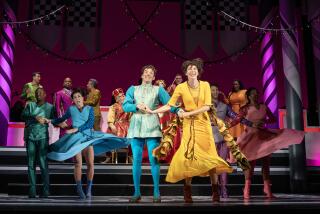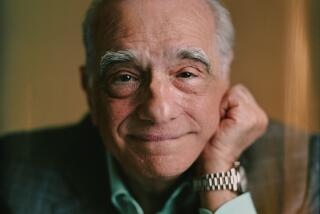‘New York’ Release Needs More Scorsese
- Share via
A mbivalent may be the most appropriate adjective to describe Martin Scorsese’s ambitious 1977 musical “New York, New York.” That was the reaction of most critics and audiences 17 years ago, and it also may be the best way to describe MGM/UA’s ambitious four-disc CAV wide-screen laser edition ($90) being released Wednesday.
The ambitious release comes complete with deleted scenes and outtakes, and a second analogue track with a commentary including much too little from director Scorsese and much too much from Philadelphia Inquirer critic Carrie Rickey underlying the now-2 1/2 hour-plus musical. That’s the key problem of this otherwise flawless production.
One of the joys of a carefully constructed analogue track is to have the director comment on specific scenes as they come up on the screen. Any comment that has little to do with the moment at hand can be distracting and confusing. Even worse, the narrative track ends up competing with the film. There is no question that Scorsese is one of the most knowledgeable filmmakers working today, but too often he rambles on, saying whatever pops into his head whenever he thinks about it.
The result is chaos--Scorsese giving the plot outline for “Blue Skies,” or discussing some aspect of film that has nothing to do with what is being seen on the screen. That kind of information is better left for on-screen interviews at the end of the film. The producers should have sat Scorsese down in front of a monitor and had him comment on each scene and the creative process that went into each scene. If you want to see how it should be done, take a look at MGM/UA’s “The Wizard of Oz” or Criterion’s “The Player” or Fox/Image’s “War of the Roses.”
Since there obviously wasn’t enough material from Scorsese, the producers include Rickey’s comments that are scene-specific, but that offer nothing more than a simplistic and often pompous account of plot and character. Often this is insulting to the viewer and does little to replace the specific insights the director can offer.
The laser disc release includes the movie-within-a-movie number, “Happy Endings” (with Larry Kert), taken out of the film in 1977 for time and reinserted in 1981. Also part of the package is the intelligent teaser-trailer imaginatively framed around the Kander-Ebb signature song “New York, New York,” as well as the original theatrical trailer, different in tone and touch, which makes for an interesting contrast. In addition, there are publicity materials, including beautiful stills in both color and black-and-white, and the initial script by Earl MacRauch and Mardik Martin, from which Scorsese and actors Robert De Niro and Liza Minnelli worked.
Reading the script shows how Scorsese and his actors improvised much of the film. Surprisingly, the original script has a happier ending--De Niro and Minnelli walk off into New York City hand in hand. Thrown into the outtakes are two scenes that Scorsese shot of that happier ending before he decided to go with the more bittersweet finale.
More to Read
Only good movies
Get the Indie Focus newsletter, Mark Olsen's weekly guide to the world of cinema.
You may occasionally receive promotional content from the Los Angeles Times.










